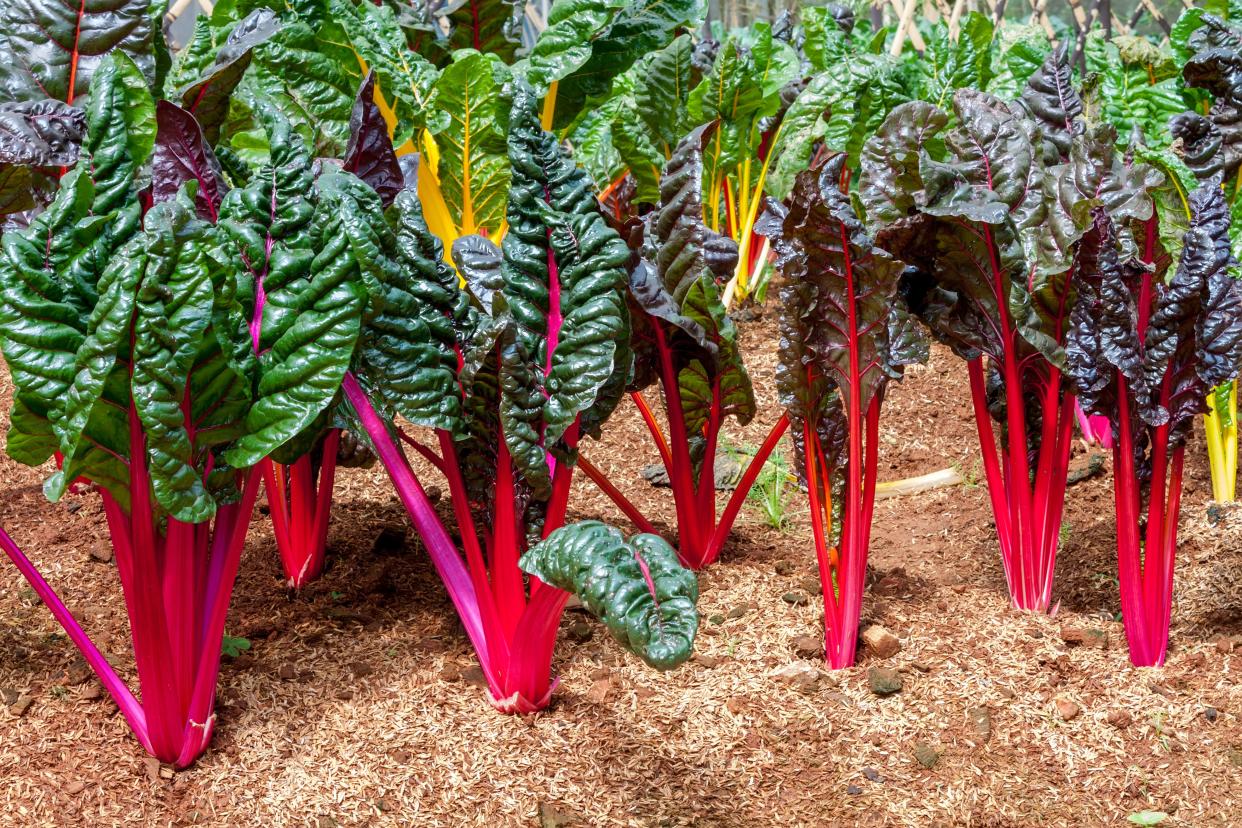CHARLES REYNOLDS: Swiss chard supplies year-round greens

Did you know Swiss chard plants are varieties of beet (Beta vulgaris)? Unlike beets, however, Swiss chard is grown for its tasty leaves, not its root. Two other surprising features are that chard — uniquely — is a vegetable that can be planted year-round in Central Florida, and that many varieties are pretty enough to use as ornamentals. Rainbow chard — aka Five Color Silverbeet — flaunts red, orange, pink, yellow and white stalks. Another outstanding variety is Vulcan, with brilliant red and orange-red stems. Amend sites heavily with organic matter to thwart root knot nematodes, and space plants 6 to 12 inches apart. The varieties mentioned are available by visiting www.RareSeeds.com.
ASIAN PALM A THING OF BEAUTY
I consider all of the world’s palm species attractive, but perhaps the most exquisite are Licualas. Native from India to Australia, the 100 or so Licuala species feature striking fan leaves that are usually divided into segments, though a few — including the spectacular Licuala grandis — have undivided leaves. Licualas are uncommon in Central Florida because most are extremely sensitive to frosts and freezes. Indeed, only the spiny licuala tolerates hard freezes, surviving temperatures as low as 26 degrees.
Spiny licuala (L. spinosa) is a densely clumping palm that grows up to 20 feet tall in the wild but is usually much smaller in cultivation. Its thin trunks are crowned with a dozen or more segmented fan leaves that resemble giant pinwheels. The long, slender leaf stems are covered with curved spines, giving the species its common name. Light-yellow flowers are followed by quarter-inch red or orange fruit. Although older specimens can tolerate sun, it’s best to install spiny licuala in dappled light on organically improved and mulched sites that are kept moist. Growth is rapid in good conditions. Propagate with seeds. Plants and seeds are available online.
MOTHER NATURE'S DOUBLE WHAMMY
We don’t think of plants suffering long-term consequences from brief periods of adverse conditions — but they do. Woody plants especially may exhibit poor performance this year due to the extremely dry February that followed a January freeze. Be observant: Some plants may need a bit of extra attention this summer.
INVITE HUMMINGBIRDS TO YOUR GARDEN
Central Florida’s resident hummer — the ruby-throated hummingbird — is relatively uncommon, frustrating gardeners who want to observe these engaging little critters. The best way to tempt them to visit is by installing specific flowering plants that provide them with nectar. Native vines such as coral honeysuckle, crossvine, trumpet vine and Carolina jessamine are ideal, as are exotic and native herbaceous perennials, including red shrimp plant, pentas, firespike, jacobinia, coneflower, firecracker plant and butterfly weed. Among woody shrubs that draw hummingbirds are sweet viburnum, azalea, chaste tree, yellow elder, firebush, jatropha and golden dewdrop. If you’re lucky, hummingbirds will set up housekeeping in your garden, building their tiny nests in tall, dense shrubs such as wax myrtle, podocarpus and Walter’s viburnum.
This article originally appeared on The Ledger: WEEKEND PLANTINGS

